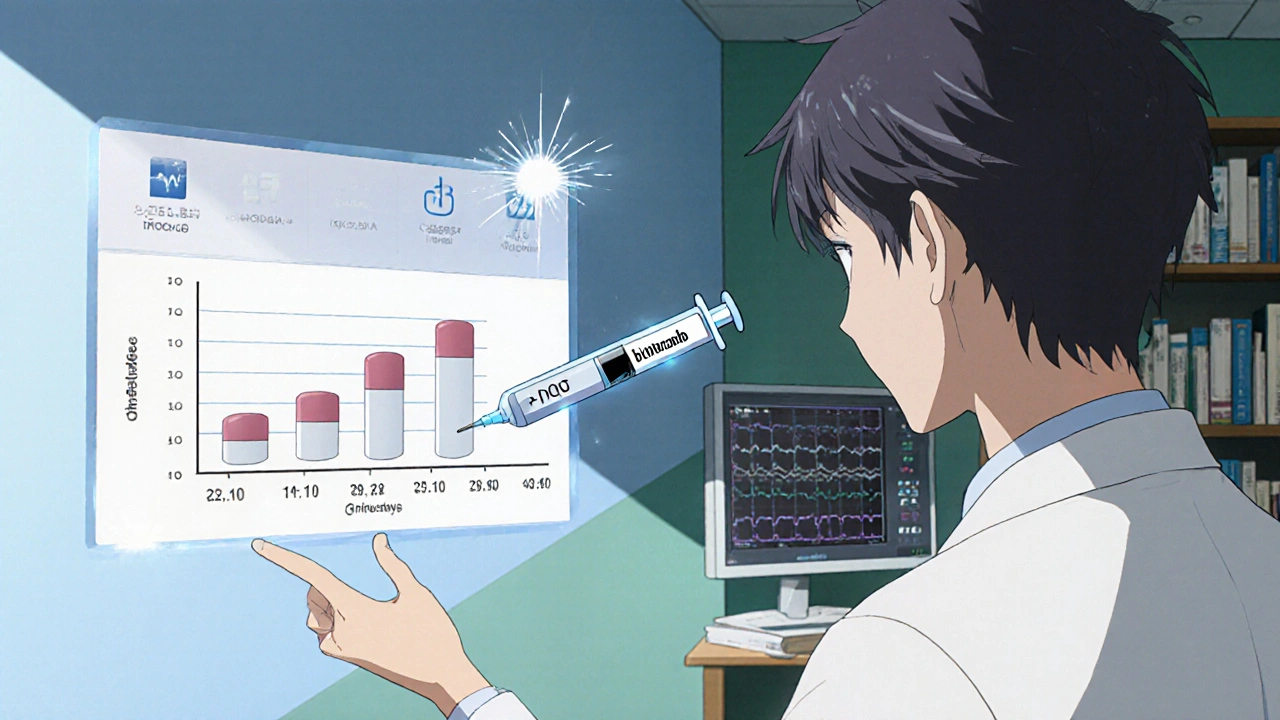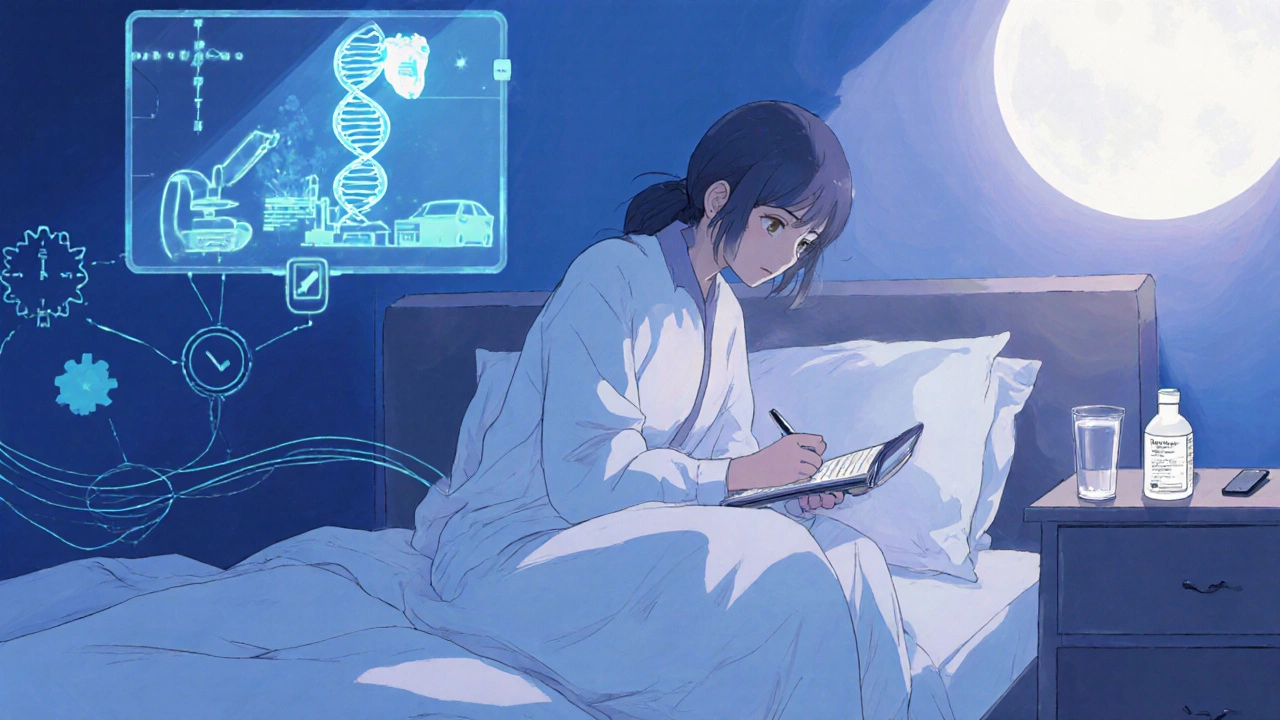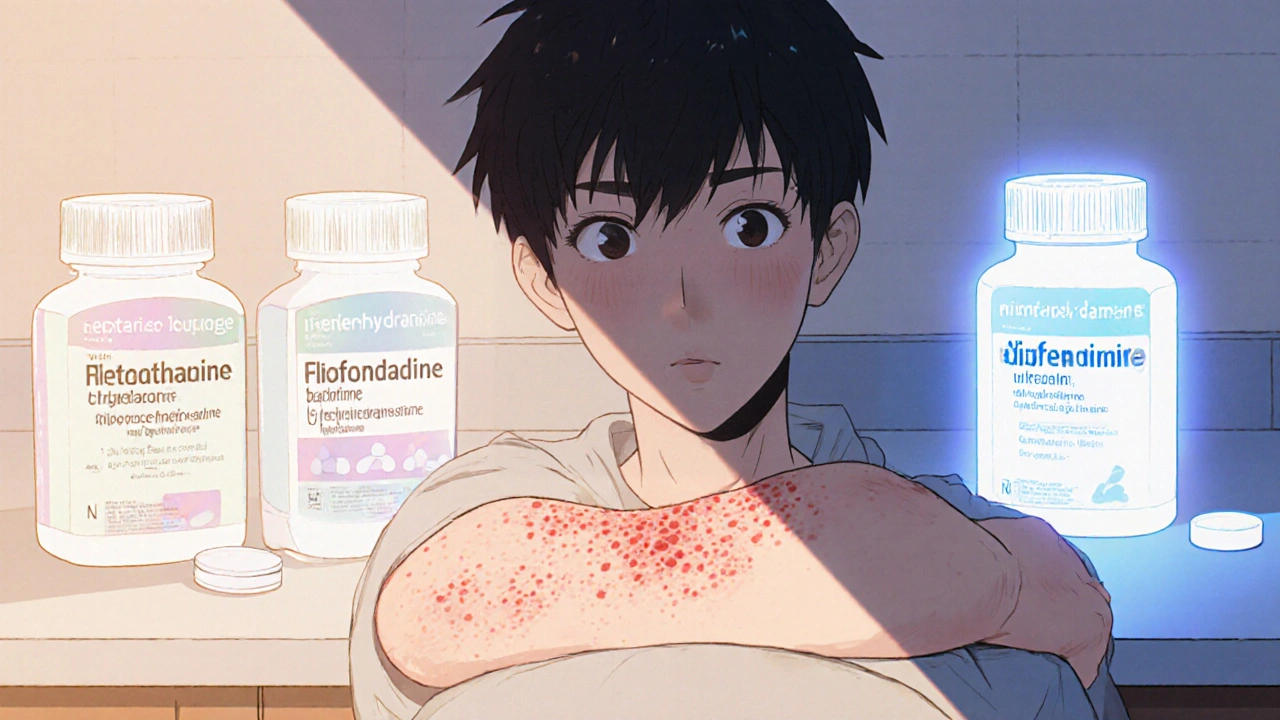Antihistamine Sedation Risk Calculator
Calculate Your Sedation Risk
Find out how sedating your antihistamine may be and how to minimize side effects.
Sedation Risk Results
How to Minimize Sedation
- For daytime use: Fexofenadine has the lowest sedation risk (8%)
- For nighttime use: Diphenhydramine provides quick relief but has high sedation risk (48%)
- Consistency is key: Take your antihistamine at the same time each day for optimal results
- Track your symptoms: Keep a symptom diary to identify patterns and adjust treatment
Key Takeaways
- Second‑generation antihistamines (cetirizine, loratadine, fexofenadine) are first‑line for hives because they cause far less drowsiness.
- About 40‑50% of patients achieve symptom control on standard doses; many need dose escalation up to four‑fold.
- When antihistamines fail, biologics like omalizumab or newer agents such as ligelizumab provide the next line of therapy.
- First‑generation drugs (diphenhydramine) still have a role for short‑term relief but their sedation rates exceed 45%.
- Keeping a symptom diary and tracking triggers dramatically improves long‑term management.
Dealing with hives can feel like a guessing game. You try a pill, hope the itch fades, and then wonder why you’re still fighting red welts. The good news? Modern antihistamines have gotten a lot smarter, and knowing when to switch or boost your dose can keep you comfortable without the dreaded "can't‑stay‑awake" side‑effect.
Antihistamines are a class of medicines that block the H1 histamine receptor, preventing histamine released by mast cells from triggering the itchy, red welts known as hives (also called urticaria, a skin reaction that appears as raised, red, and often itchy bumps). By stopping that signal, antihistamines reduce the swelling and itching that make hives so uncomfortable.
Why antihistamines work for hives
When an allergen hits the skin, mast cells dump histamine into the surrounding tissue. Histamine binds to H1 receptors on blood vessels, causing them to leak fluid and become inflamed - that’s the hive you see. Blocking H1 receptors stops this cascade, so the rash fades and the itch calms.
First‑generation vs. second‑generation antihistamines
First‑generation drugs like diphenhydramine (Benadryl) cross the blood‑brain barrier easily. The result? Up to 48% of users feel noticeably drowsy, and driving ability drops sharply. They still have a place for short‑term, nighttime relief, but they’re rarely recommended for daily control.
Second‑generation agents were engineered to stay out of the brain, cutting sedation to roughly 10‑15% of users. Their longer half‑lives (8‑14 hours) also mean once‑daily dosing works for most adults.
| Attribute | First‑generation | Second‑generation |
|---|---|---|
| Typical dose | 25‑50 mg every 4‑6 h | 10 mg daily (cetirizine, loratadine) or 180 mg daily (fexofenadine) |
| Half‑life | 4‑8 h | Cetirizine 8‑10 h; Loratadine 12 h; Fexofenadine 14 h |
| Drowsiness rate | ≈48 % | ≈12 % (overall) |
| Onset of action | 30‑60 min | Cetirizine 1 h; Loratadine 1.3 h; Fexofenadine 2.6 h |

Standard dosing and when to increase
Guidelines from the European Academy of Allergy and Clinical Immunology (2022) start every hives patient on a standard daily dose of a second‑generation antihistamine. If itching persists after a week, physicians may safely raise the dose up to four times the usual amount. For example, cetirizine can go from 10 mg to 40 mg per day without major safety concerns for most adults.
Studies show that around 57 % of chronic spontaneous urticaria (CSU) patients need this escalation to reach acceptable control. Monitoring is key - high doses can rarely affect the heart’s QT interval (about 0.2 % of patients).
Choosing the right second‑generation antihistamine
All three major agents work, but subtle differences matter:
- Cetirizine (Zyrtec) delivers the fastest peak (≈1 h) and shows the strongest itch reduction (78 % symptom drop in a 2021 trial). Its trade‑off: slightly higher sedation (≈15 %) than fexofenadine.
- Loratadine (Claritin) has a smooth 12‑hour profile and the lowest sedation among the trio (≈8 %). Some patients report it feels “less present” - it may be a good first try for daytime use.
- Fexofenadine (Allegra) shows the best cognitive performance in driving simulators (only 8 % impairment) but can be less potent for severe itching.
Because individual response varies, many clinicians start with cetirizine for its potency, then switch if drowsiness becomes an issue.
What to do when antihistamines aren’t enough
If you’ve tried the maximum tolerated dose of a second‑generation antihistamine and the welts keep coming, it’s time to consider the next step.
Biologic options
Omalizumab (Xolair) is a monoclonal antibody that binds IgE, stopping the cascade before histamine release. Clinical trials report complete symptom control in about 58 % of refractory CSU patients, but each dose costs roughly $3,200.
Newer agents like ligelizumab have shown even higher response rates (51 % complete response in phase 2b) and earned FDA Breakthrough Therapy designation in 2023.
Immunosuppressants
Cyclosporine can calm severe cases, achieving 65 % remission in some studies. However, the drug carries a 15 % risk of kidney function decline, so it’s reserved for short‑term bursts under specialist care.
Adjunct therapies
Adding a leukotriene receptor antagonist (e.g., montelukast) or combining two second‑generation antihistamines (cetirizine + fexofenadine) can help a subset of patients. The key is tracking symptoms closely to see if the combo yields a measurable drop in the Urticaria Activity Score.

Practical tips to minimize drowsiness
- Take your antihistamine at the same time each day - consistency maximizes steady blood levels.
- If you experience any sedation, try taking the dose at night and see if daytime alertness improves.
- Avoid alcohol and other CNS depressants while on first‑generation drugs - they can amplify drowsiness.
- Consider switching to a second‑generation agent if you need daily dosing for work or school.
- Use a symptom diary (paper or apps like Hive Wise) to pinpoint triggers such as NSAIDs, stress, or heat.
How to pick the best antihistamine for your lifestyle
Think of three factors: how quickly you need relief, how sensitive you are to sedation, and your budget.
- Fast relief needed? Cetirizine reaches peak levels in about an hour - great for flare‑ups.
- Need to stay sharp? Fexofenadine’s low brain penetration makes it the safest for drivers.
- Cost‑conscious? Generic loratadine and cetirizine often cost under $15 a month.
Match the drug to your daily routine and you’ll likely stay symptom‑free without the afternoon slump.
Future directions - what’s coming next?
Researchers are exploring pharmacogenetic testing to match patients with the antihistamine that best fits their metabolism. CYP2C19 variants affect how quickly cetirizine is cleared, meaning some people might need a lower dose to avoid side effects.
Meanwhile, next‑generation mast cell stabilizers are in early‑phase trials, promising to stop the histamine release at its source rather than just blocking the receptor.
Even with these advances, experts agree that second‑generation antihistamines will stay the backbone of hives treatment for years because they’re cheap, safe, and work for roughly half of all patients straight out of the gate.
Can I use a first‑generation antihistamine for occasional hives?
Yes. If a hive flare lasts only a few hours, diphenhydramine can provide quick relief. Just be prepared for drowsiness, and avoid operating heavy machinery until you know how it affects you.
What’s the safest way to increase my antihistamine dose?
Consult your doctor first. For cetirizine, the usual maximum is 40 mg per day (four 10 mg tablets). The doctor will monitor heart rhythm if you stay at that level for more than a few weeks.
When should I consider a biologic like omalizumab?
If standard antihistamines, even at four‑fold doses, fail to control your hives after 6‑8 weeks, a specialist may recommend omalizumab. It’s given as a monthly injection and works in many patients who don’t respond to pills.
Do antihistamines interact with common medications?
First‑generation antihistamines can amplify the sedative effects of benzodiazepines and opioids. Second‑generation drugs have fewer interactions, but they can increase levels of certain antifungals (ketoconazole) and may affect the metabolism of some cholesterol‑lowering agents.
How can I track my hives activity effectively?
Use the Urticaria Activity Score (UAS7) - record daily itch severity (0‑3) and hive count (0‑3) for a week. Apps like Hive Wise let you log these numbers, add photos, and spot patterns in triggers.


Graham Holborn
Hi, I'm Caspian Osterholm, a pharmaceutical expert with a passion for writing about medication and diseases. Through years of experience in the industry, I've developed a comprehensive understanding of various medications and their impact on health. I enjoy researching and sharing my knowledge with others, aiming to inform and educate people on the importance of pharmaceuticals in managing and treating different health conditions. My ultimate goal is to help people make informed decisions about their health and well-being.